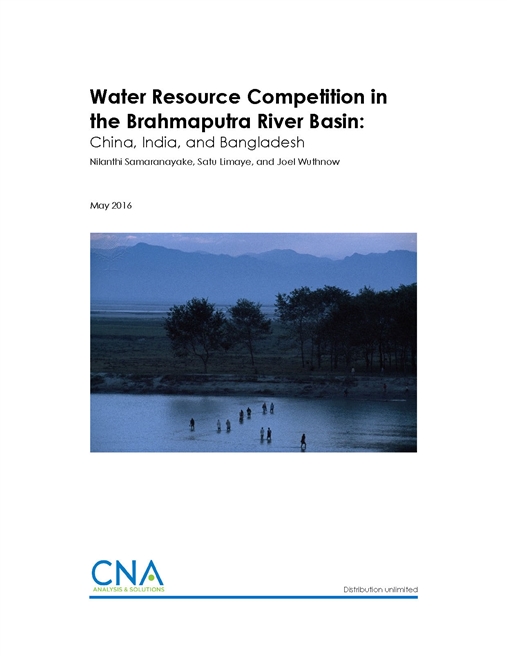The Brahmaputra River, which originates in China and runs through India and Bangladesh, raises serious concerns for regional stability. China and India have fought a war over contested territory through which the Brahmaputra flows, while Bangladesh faces human security pressures in this basin that will be magnified by upstream river practices. Despite potential threats to regional stability from dam- building activities and water diversion plans on shared resources, no bilateral or multilateral water management accord exists in the Brahmaputra River basin. Moreover, this basin has received little scholarly attention compared with other river basins such as the Ganges and Indus. As a result, CNA undertook a study to gain an understanding of the equities and challenges over Brahmaputra resources at the bilateral and domestic levels in order to consider the possibilities for greater cooperation across the basin.
We find that upper riparians China and India are more concerned about the basin in political terms, whereas lowest riparian Bangladesh is primarily concerned about the basin in physical terms. While current water cooperation in this basin is limited and each riparian has its own domestic considerations, there are ways to pursue positive interactions in the Brahmaputra basin at the bilateral and even multilateral levels. In fact, because there are no interstate or water-related crises at present, the moment is opportune for China, India, and Bangladesh to work cooperatively to prevent future problems. Appealing to the shared interests of the three countries—such as economic integration and development of the basin—will be more effective for multilateral cooperation than focusing on the narrow lens of water-sharing.
Download reportDistribution unlimited.
Details
- Pages: 116
- Document Number: IRM-2016-U-013097
- Publication Date: 5/2/2016
